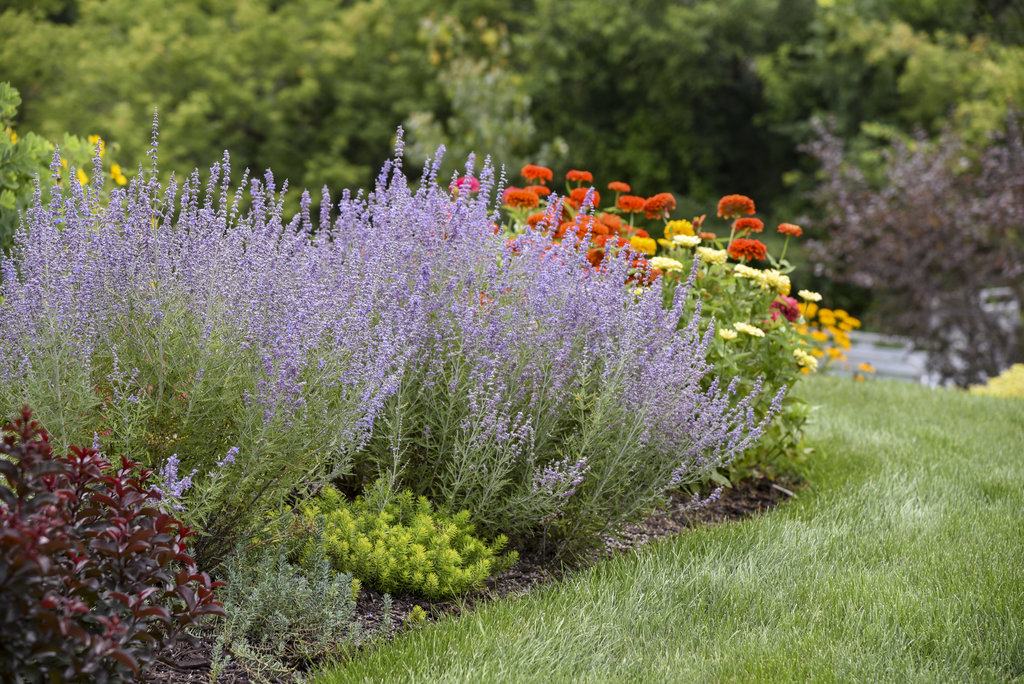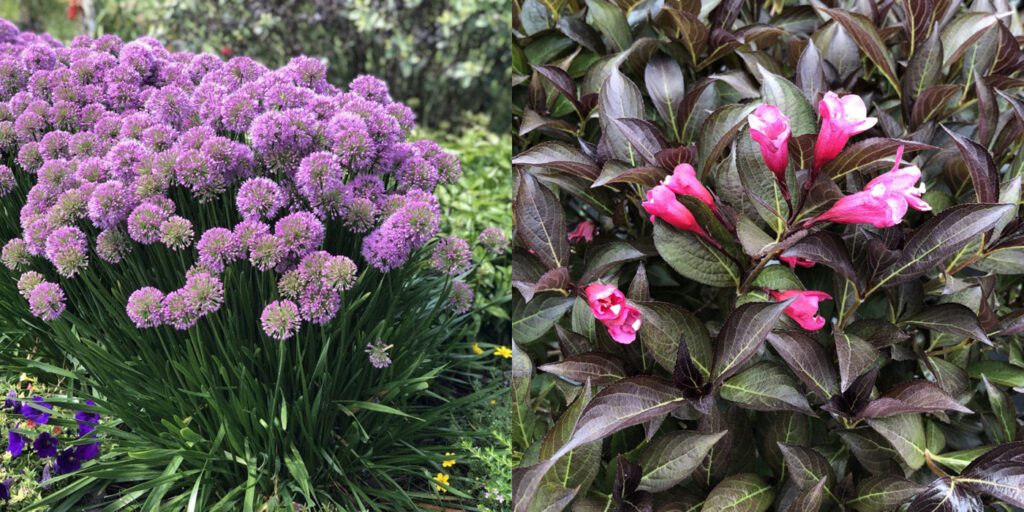Stunning Companion Plants For Wine And Roses Weigela
Stunning Companion Plants for Wine and Roses Weigela
The Wine and Roses weigela is a beautiful shrub that blooms in shades of pink, red, and white. It's a versatile plant that can be used in a variety of settings, from borders to foundation plantings. But to really make your weigela shine, you need to choose the right companion plants.
In this blog post, we'll take a look at some of the best companion plants for Wine and Roses weigela. We'll discuss their different characteristics and how they can help to create a stunning and harmonious garden.
Choosing Companion Plants
When choosing companion plants for your weigela, there are a few things you'll want to keep in mind. First, you'll want to consider the size and growth habit of the weigela. Wine and Roses weigela can grow to be 4-5 feet tall and wide, so you'll need to choose plants that won't outgrow it.
Second, you'll want to consider the bloom time of the weigela. Wine and Roses weigela blooms in spring and summer, so you'll want to choose plants that bloom at the same time or later. This will help to extend the bloom season in your garden.
Finally, you'll want to consider the color of the weigela. Wine and Roses weigela has pink, red, and white flowers, so you'll want to choose plants that complement those colors.
Here are some of the best companion plants for Wine and Roses weigela:
- Shasta daisies: Shasta daisies are a classic companion plant for weigela. They have white flowers that bloom in the summer, and they help to add height and structure to the garden.
- Iris: Iris come in a variety of colors, so you can choose ones that complement the colors of your weigela. They bloom in the spring and summer, and they help to add a touch of elegance to the garden.
- Russian sage: Russian sage is a tall, upright plant with blue flowers. It blooms in the summer, and it helps to add a touch of color and height to the garden.

- Globe thistle: Globe thistle is a spiky plant with purple flowers. It blooms in the summer, and it helps to add a touch of drama to the garden.
- Black-eyed Susan: Black-eyed Susan is a carefree plant with yellow flowers. It blooms in the summer, and it helps to add a touch of sunshine to the garden.
- Japanese forest grass: Japanese forest grass is a tall, grass-like plant with green leaves. It blooms in the fall, and it helps to add a touch of texture and movement to the garden.
These are just a few of the many companion plants that you can use with Wine and Roses weigela. By choosing the right plants, you can create a stunning and harmonious garden that will bloom for months to come.
The wine and roses weigela is a beautiful flowering shrub that can add a touch of elegance to any garden. But what plants should you pair it with to create a truly stunning display?
Here are a few suggestions:
- Shasta daisies: These bright white flowers will complement the wine and roses weigela's vibrant pink blooms.
- Siberian iris: These blue or purple flowers will add a touch of coolness to the warm hues of the weigela.
- Globe thistle: These spiky flowers will add a touch of drama to the garden.
- Russian sage: This silvery-blue shrub will provide contrast to the weigela's dark purple foliage.
Of course, these are just a few suggestions. There are many other plants that would make great companions for the wine and roses weigela. The best way to find the perfect plants for your garden is to experiment and see what works best.
For more information about wine and roses weigela companion plants, I recommend visiting Gardenia Inspiration. This website has a wealth of information about different types of weigelas and their companion plants.
FAQ of wine and roses weigela companion plants
Question 1: What are some good companion plants for wine and roses weigela?
Answer: Wine and roses weigela is a versatile shrub that can be paired with a variety of other plants. Some good companion plants include:
- Other flowering shrubs, such as hydrangeas, lilacs, and spirea.
- Perennials, such as hostas, daylilies, and coneflowers.
- Groundcovers, such as creeping phlox and ajuga.
- Evergreens, such as junipers and pines.
When choosing companion plants, it is important to consider the following factors:
- Plant size and growth habit. Wine and roses weigela can grow up to 6 feet tall and wide, so you will need to choose companion plants that are compatible in size.
- Sunlight requirements. Wine and roses weigela prefers full sun, so you will need to choose companion plants that also thrive in full sun.
- Soil type. Wine and roses weigela is adaptable to most soil types, but it prefers well-drained soil.
- Moisture requirements. Wine and roses weigela is drought-tolerant, but it will benefit from regular watering during the summer months.
Question 2: What are the benefits of planting companion plants with wine and roses weigela?
Answer: There are several benefits to planting companion plants with wine and roses weigela. These include:
- Improved appearance. Companion plants can help to create a more visually appealing landscape.
- Increased biodiversity. Companion plants can attract beneficial insects and pollinators.
- Reduced pest and disease problems. Companion plants can help to deter pests and diseases.
- Improved soil health. Companion plants can help to improve the soil quality and drainage.
Question 3: How do I plant companion plants with wine and roses weigela?
Answer: Planting companion plants with wine and roses weigela is relatively simple. Here are the basic steps:
- Choose the right location. The location should be sunny and have well-drained soil.
- Prepare the soil. The soil should be loosened to a depth of 12 inches.
- Plant the companion plants. Space the plants according to their mature size.
- Water the plants well.
Question 4: What are some common problems that can occur with wine and roses weigela companion plants?
Answer: Some common problems that can occur with wine and roses weigela companion plants include:
- Pests, such as aphids, spider mites, and scale insects.
- Diseases, such as powdery mildew and rust.
- Watering problems, such as overwatering or underwatering.
- Soil problems, such as poor drainage or compacted soil.
Question 5: How can I troubleshoot problems with wine and roses weigela companion plants?
Answer: If you are experiencing problems with your wine and roses weigela companion plants, there are a few things you can do to troubleshoot the problem:
- Identify the problem. What is the specific problem that you are experiencing?
- Investigate the cause. What is causing the problem?
- Take corrective action. Once you have identified the cause of the problem, you can take steps to correct it.
- Monitor the plants. Continue to monitor the plants to make sure that the problem has been resolved.
Image of wine and roses weigela companion plants
Ligustrum is a genus of evergreen shrubs and trees that are often used as hedges or foundation plants. They are tolerant of a wide range of conditions, including full sun, partial shade, and drought. Ligustrum comes in a variety of colors, including green, purple, and variegated.
Hydrangeas are deciduous shrubs that are known for their large, showy flowers. They come in a variety of colors, including blue, pink, and white. Hydrangeas prefer full sun to partial shade and moist, well-drained soil.
Evergreens are a great way to add year-round interest to your garden. They come in a variety of shapes, sizes, and colors. Some popular evergreens for companion planting with wine and roses weigela include junipers, pines, and hollies.
Brunnera is a herbaceous perennial that is known for its blue, heart-shaped leaves. It blooms in the spring with small, blue flowers. Brunnera prefers partial shade and moist, well-drained soil.
Hostas are herbaceous perennials that are known for their large, colorful leaves. They come in a variety of colors, including green, blue, and yellow. Hostas prefer partial shade and moist, well-drained soil.



Post a Comment for " Stunning Companion Plants For Wine And Roses Weigela"